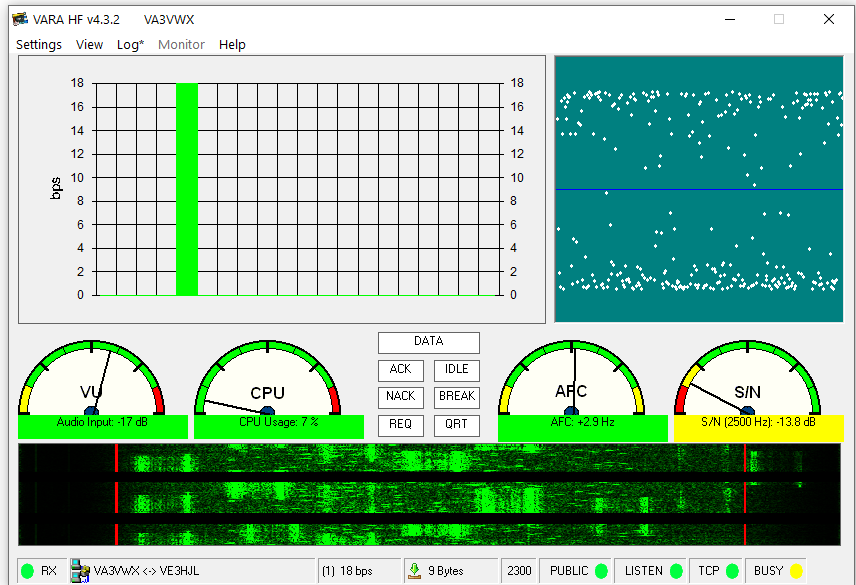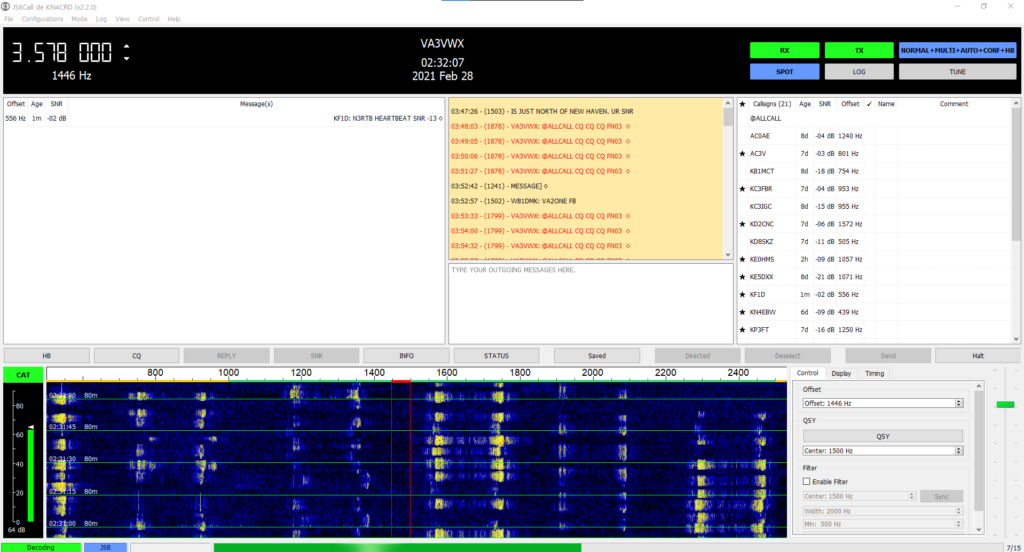Posts in Category: Amateur Radio
The RTTY Contest Problem
Sorry, I cannot pass this emergency traffic right now because there is a RTTY contest….
There is truly little in the HAM Radio aka: Amateur Radio world that I complain about, especially in the digital modes since I play around with them a fair bit, but there is one major exception. RTTY contests!
RTTY or Radio-Teletype is one of the original forms of text based digital communication implemented in both commercial and amateur high-frequency radio and even on the VHF band. While technology has come a long way and RTTY use has dwindled there are still RTTY enthusiasts just like CW (or morse code) enthusiasts and other users. So even though RTTY by all standards is an outdated old method of data transmission, there are still people out there who engage in RTTY conversations.
My issue does not lay with RTTY enthusiasts, but rather what happens when we have contests in specific modes and the effect these contests have on large portions of multiple HF bands.
It is no secret the three primary bands radio amateurs use are 80 meters, 40 meters and 20 meters. These bands have unique propagation characteristics that are dependent on the time of day, solar cycle and intended use. For example, 20 meters is a daytime band with a good low noise floor (relative to other bands) and signals can often travel thousands of kilometers. So, if you are floating in a boat out at sea some 2000km away from the shore and need to check email at 9AM, 1PM and again at 5PM, that is your band. During the evening hours and overnight the 40-meter band can really go the distance, the noise floor is usually not as good as 20-meter but not horrible by any means.
But what if you are floating in your boat and you are only about 800km from the shoreline during the daytime? The problem is, the 20-meter band may overshoot (literally) the Winlink RMS gateway station you want to connect to, so in that case you go lower in frequency to 40 meters and presto, it works. If you are even closer, 80 meters might be more reliable with faster data rates due to a better SNR although the noise floor is typically higher than 40 meters.
But what happens if there is a RTTY contest? Nothing, you will have a hard time getting through regardless of the band you use! Hopefully, you have some other way of getting in contact with the shoreline when you need parts or have an urgent email waiting for you from a land based relative!
Okay, so you are floating in your boat and your VHF marine radio cannot reach anyone and the HF marine radio is acting up, but that is okay because you can relay messages through JS8CALL on your amateur radio and even get data into the APRS-IS network. You can literally use APRS to send a SMS via SMSGTE to your emergency contacts on shore who can then send you a Winlink email! At least they will know you are in trouble, right? Well, if you look at the waterfall above…. nope, good luck! JS8 which uses the FT8 protocol is robust, but it is always nice to hear heartbeat beacons that give you a SNR. If they can hear you, they let you know, and you know then your message has gone through!
Except, that is not going to work because the RTTY contest is bleeding all over JS8CALL and where all the relay stations reside and HB section too. GOOD LUCK!!! With RTTY signals washing all over, you are in trouble.
The problem with RTTY that no one likes to acknowledge is that it is a largely inefficient outdated mode. Unlike FT4, FT8, PSK31, JS8CALL, SSTV modes, Olivia etc. which all tend to be narrow signals and stick to little 2700 HZ wide portion of a single frequency or two frequency, RTTY signals are quite wide, noisy, do not tolerate interference well and do not stick to any small area or frequency during a contest.
When there is a FT8 or FT4 contest, everyone is generally confined to a small section of whatever band they are operating in and these signals do not interfere with the rest of the band. The same is largely true with PSK31 and other modes where users tend to be confined to small slivers of the band.
Meanwhile, with RTTY, it is like having a very wide FT8 signal and everyone just sits all over the place all day long, it is akin to using the whole digital and even a large chunk of the CW section of an HF band for FT8 with magnitudes of greater inefficiency.
Sure, contesting is fun, and I do not have anything against RTTY, but when it creates problems for all sorts of users across large sections of different bands, we have a problem. Now I understand, Winlink RMS sites sit across a multitude of frequencies in the digital section of the band plans and we cannot reasonably expect there not to be any overlap. I understand that, but that is not the problem, the problem is every single RMS gateway is crushed by RTTY traffic rendering all the HF Winlink system unusable and that is a problem. It even renders the tiny sliver of spectrum JS8 uses almost unusable, that is a problem. In fact, the only part of any band RTTY contesters seem to avoid is that part occupied by FT8 signals because even a weak FT8 signal will walk all over a strong RTTY signal and there is always a ton of FT8 traffic. So, all these contesters avoid it like the plague.
So here is my proposed solution:
All contesting bodies need to lay out a specific range of frequencies on specific bands to limit interference with other digital modes, end explicitly state that points will not be awarded for stations operating outside of said frequencies. There can also be time restrictions placed of specific parts of band to help get traffic through. Yeah, that means more RTTY signals will be packed together into a tighter space, but ham radio contests are supposed to be fun, they are not life and death, they are not important priority and welfare traffic. That is what people need to understand. When you need to use 80m, 40m or 20m for important traffic, the last thing you need is someone calling CQ CONTEST making it harder for that important traffic to pass. Just ask the CW users how they feel after a RTTY contest and you will know, something is seriously wrong.


